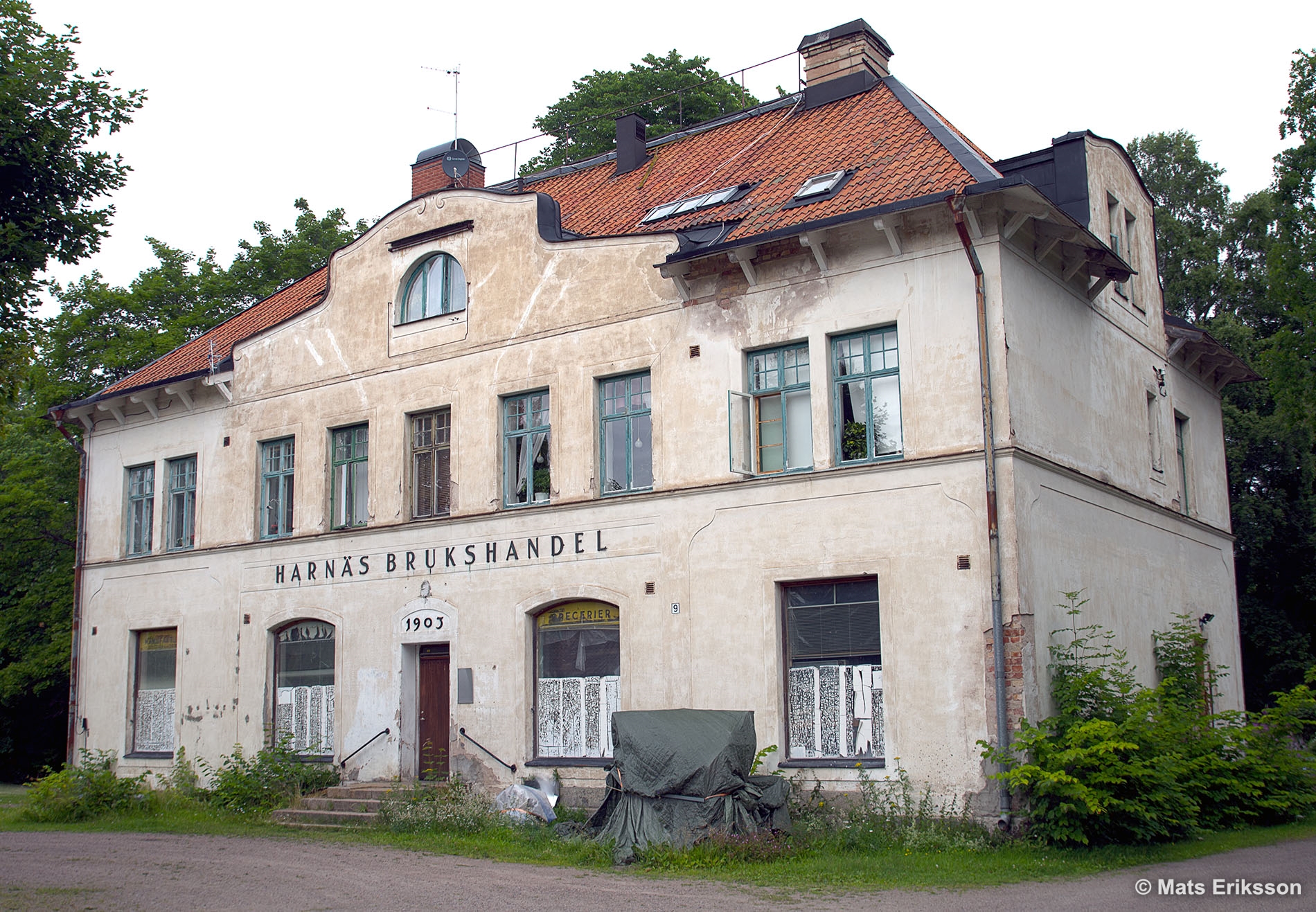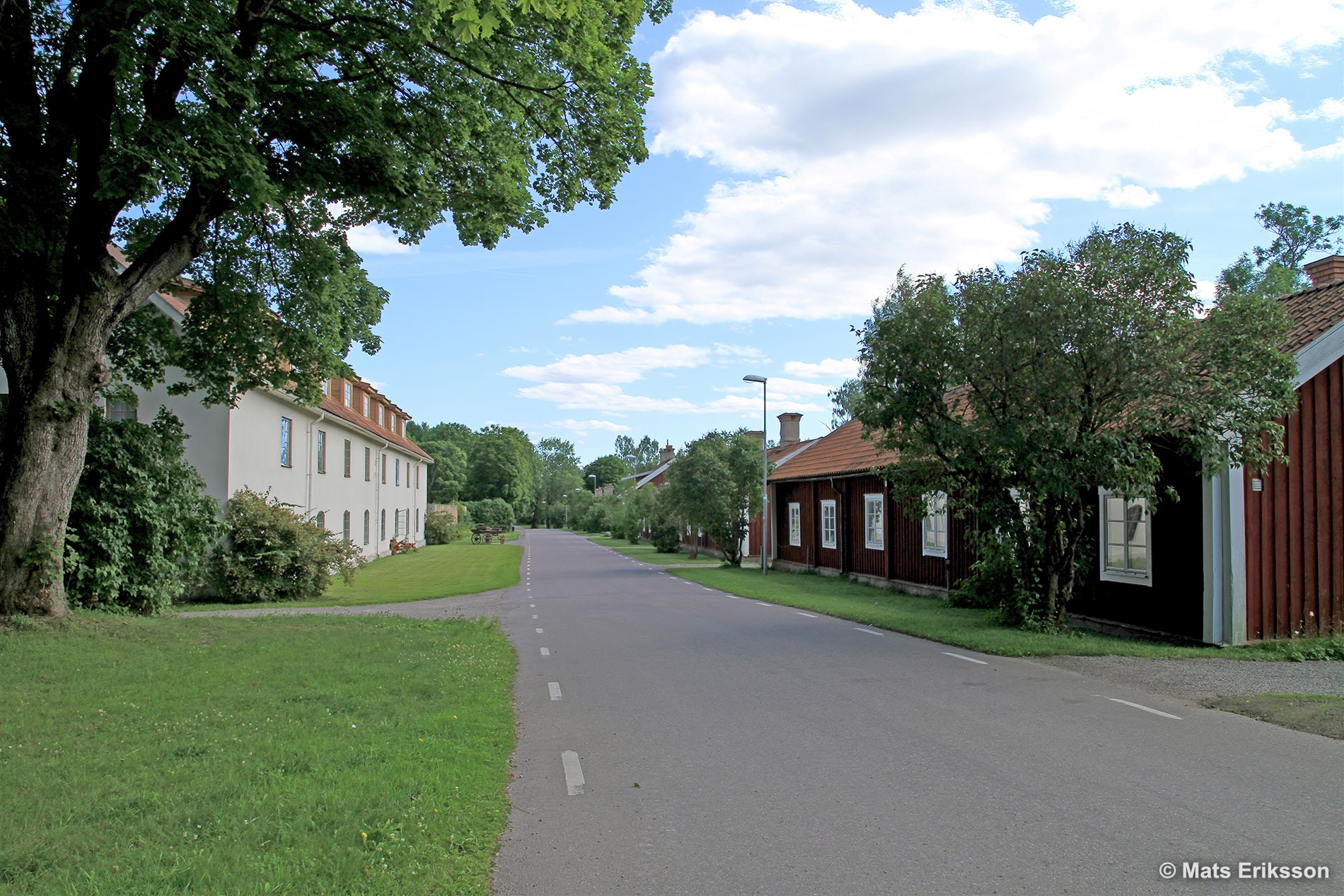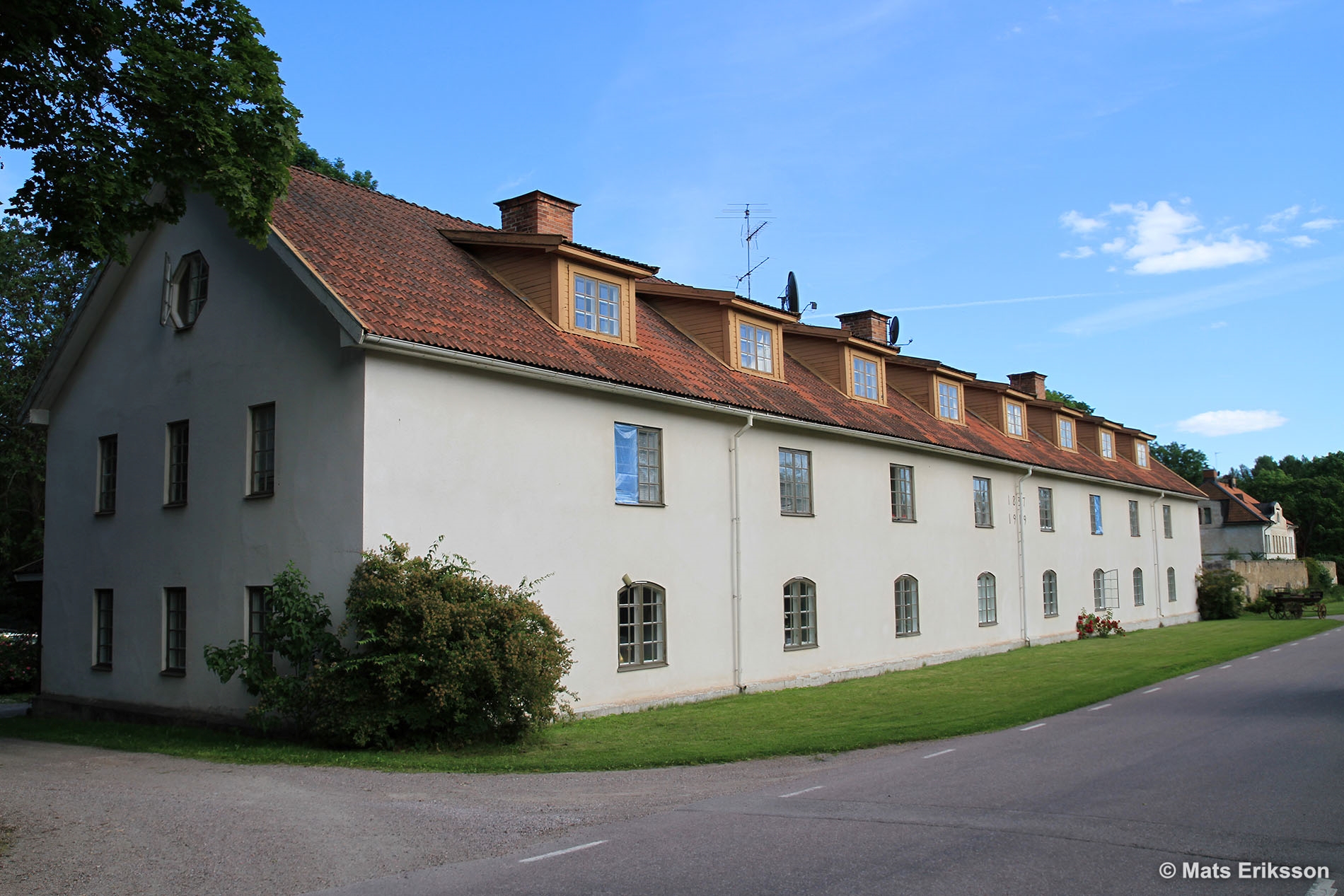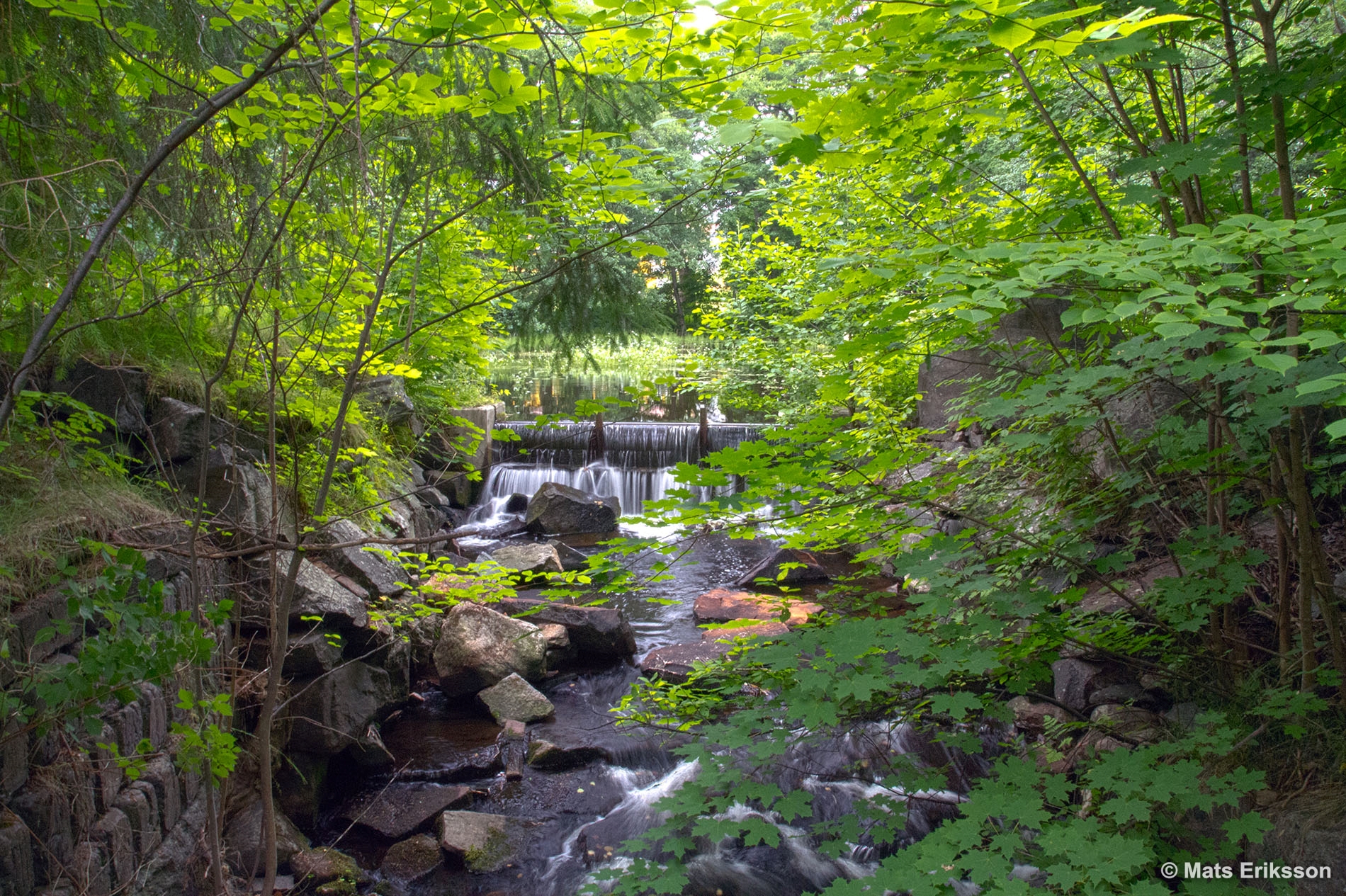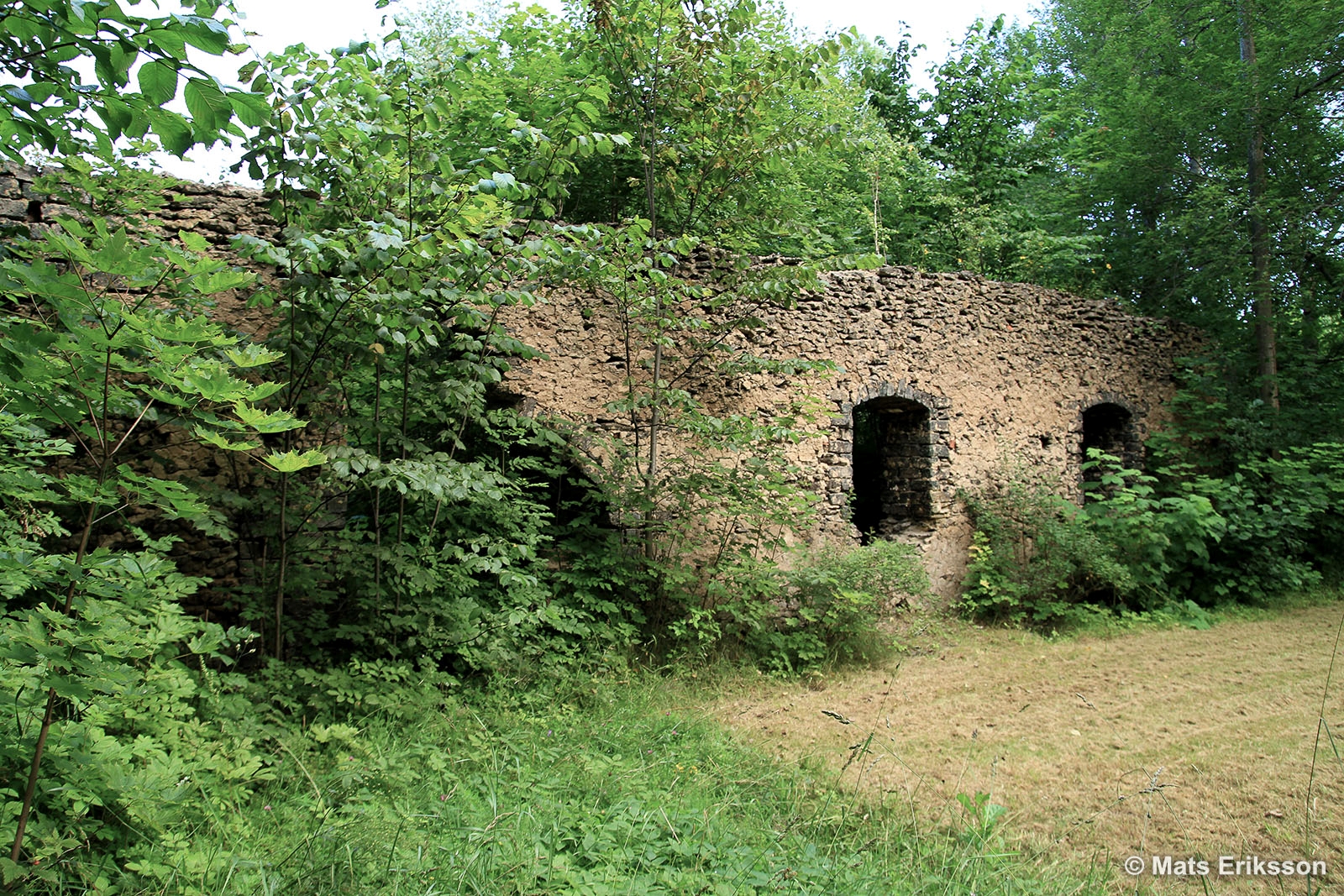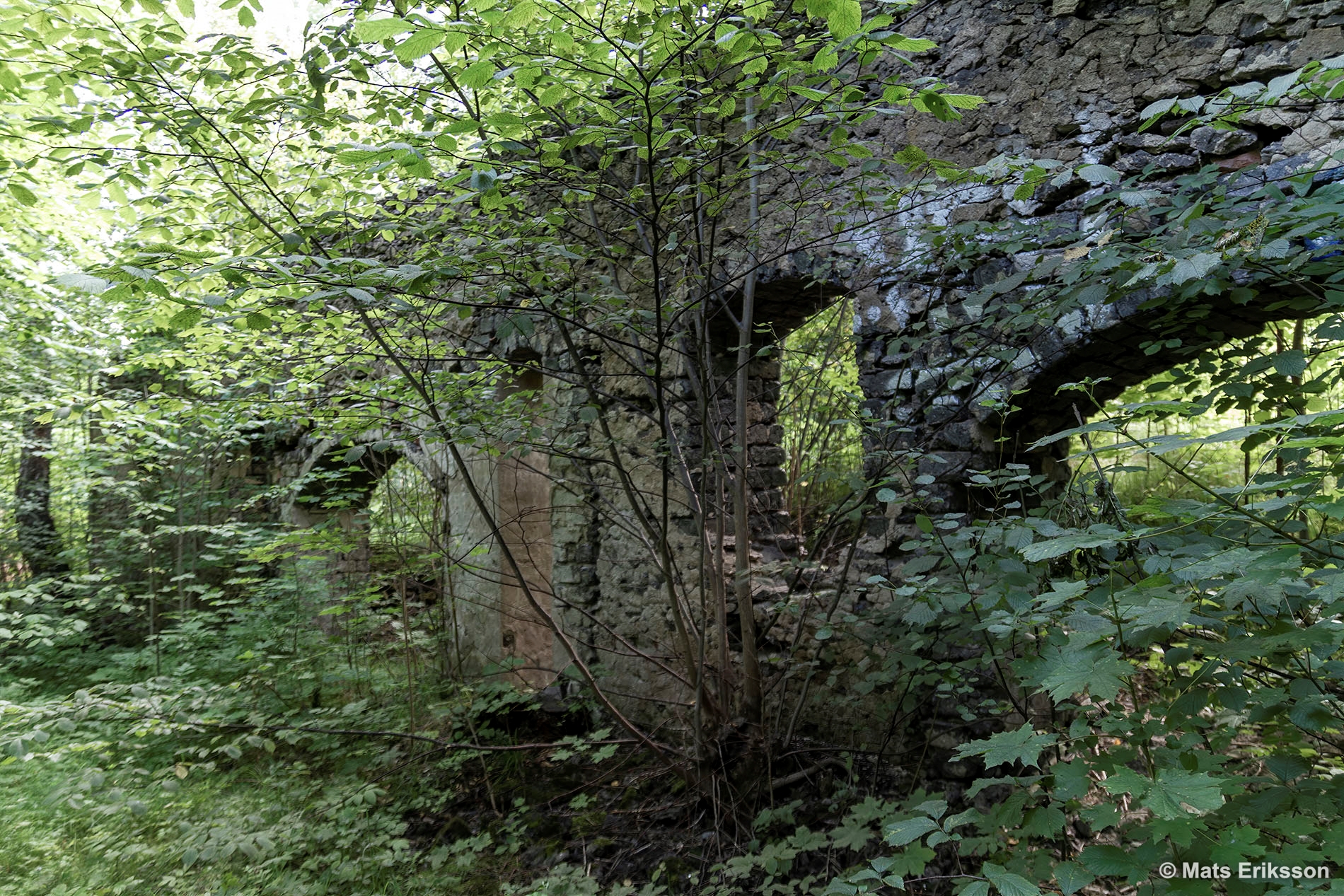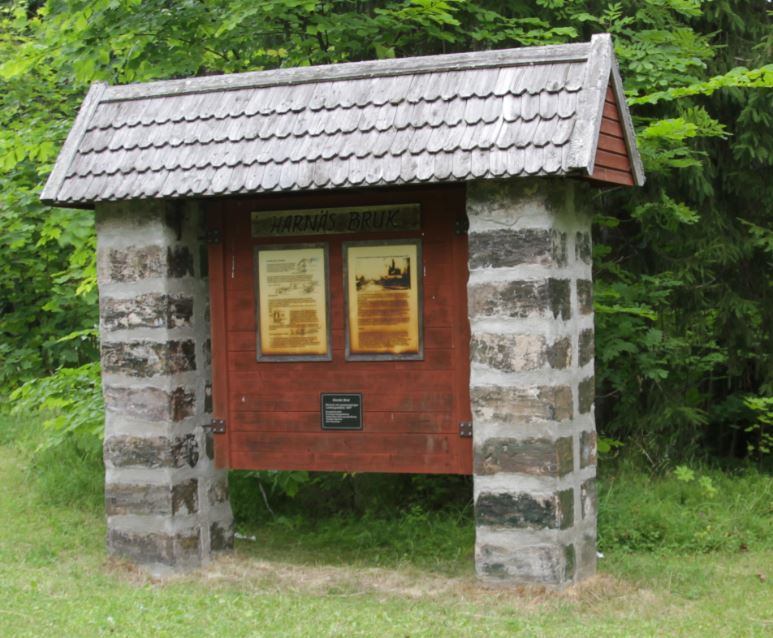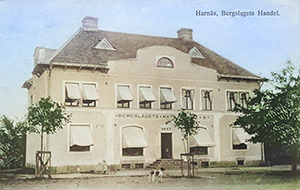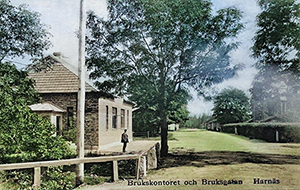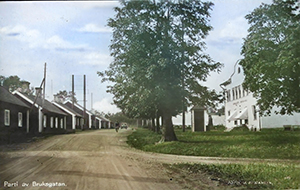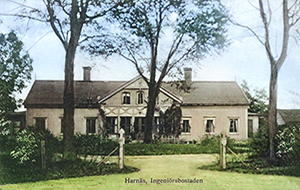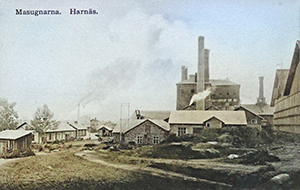Harnäs mill
“Skvalt mills” and saws The “skvalt mill” owning farmers protest against the sawmill because its damping results in flooded property and poor water flow in Harnäsbäcken. Finally, they burn down Jutha's saw. Jutha's son Hans Persson received permission in 1662 to build a new saw. The farmers are also entitled to a saw-mill nearby.
Harnäs mill In 1660 the blast furnace is in operation. Pig iron from it is transported to Älvkarleö mill for forging to bar iron and then back to Harnäs for shipping. In order to avoid these transports, in 1662 a steel iron smithy was built at Masugnsbäcken. In 1664, Depken builds another blast furnace at Hyttön, south of Älvkarleö, to prepare the ore mined there. A mill description from 1712 tells that in the mill there is blast furnace, b ar iron hammer with two hearths, coal houses, carpentry workshop, cleaning shop, milk mill, mills, harbour and sea sheds.
New process methods develop the blast furnace for the closure in 1911 In 1896 the blast furnace is repaired, a new roaster is erected and new coal houses. A lack of water that year causes the purchase of a steam engine for blast furnace operation. 1890-91 a new blast furnace is built which in 1895 gets new strong turbines for the blower machine 1898 a new coal house is built at the harbour The last major investment takes place in 1902-04. The oldest roaster is demolished and a new one is being built. In 1903, a manager and 65 workers run the mill, which is running 351 days. Production amounted to 9624 tons of pig iron. The charcoal season was 779330 hectoliters. After the utility street, the building was also built during the 19th century. Several residential houses are added. In 1823 a new barn is built. 1837 new stable, which in 1919 was converted to housing. Operation of mills ceases in 1911. A structural transformation takes place within industry. Skutskär's sawmill, built 1868-70, is in large operation. Rebuilt after fire in 1874 and the pulp mill from 1894 is developing strongly. The workers from Harnäs blast furnace get work in the saw and factory. The blast furnaces are demolished in 1917. Steam boilers, windmills and buildings are sold off.
1772-1812 the mill is owned by Tomas Tottie. His heirs sell the mill in 1812 to Lieutenant Colonel Friar Carl af Nordin, who immediately lets the purchase pass on to the owner of Forsmark's mill, Count Samuel af Ugglas. The count dies before he joins the mill, which is taken over by his son Gustaf af Ugglas. He sells the iron forging to Fagersta mill, Following the acquisition of shares in 1918, Harnäs will be owned by Stora Kopparbergs Bergslags AB, today STORA.
Source: The text is from a information board at the Harnäs mill ruin Postcards from Conny Blombergs collection. The originals are black and white. These I have colorrized in Photoshop.
|

